Gyroscopes are devices that measure rotational changes. On first mention, most people picture the beautifully rotating classical mechanical gyroscope. Although widely used till the late 1900s, optical gyroscopes have largely replaced as the new industry standard due to having no moving parts, thus being far more reliable and accurate.
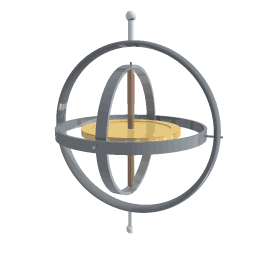
Notice how the inner spinning disk and axis maintain their rotation direction despite the outer ring’s random rotational movement. Courtesy of Best Animations.
Above is an animation of a mechanical gyroscope. Notice how the inner spinning disk and axis maintain their rotation direction despite the outer ring’s random rotational movement. A mechanical gyroscope can thus be used to detect rotations by using the inner gyroscope’s axis as a reference point. However, all the moving parts make it a complex device to maintain.
An optical gyroscope, shown below, is a compact piece of technology consisting of a laser inside a ring interferometer. As previously mentioned, the main advantage of optical gyroscopes is they have zero moving parts.
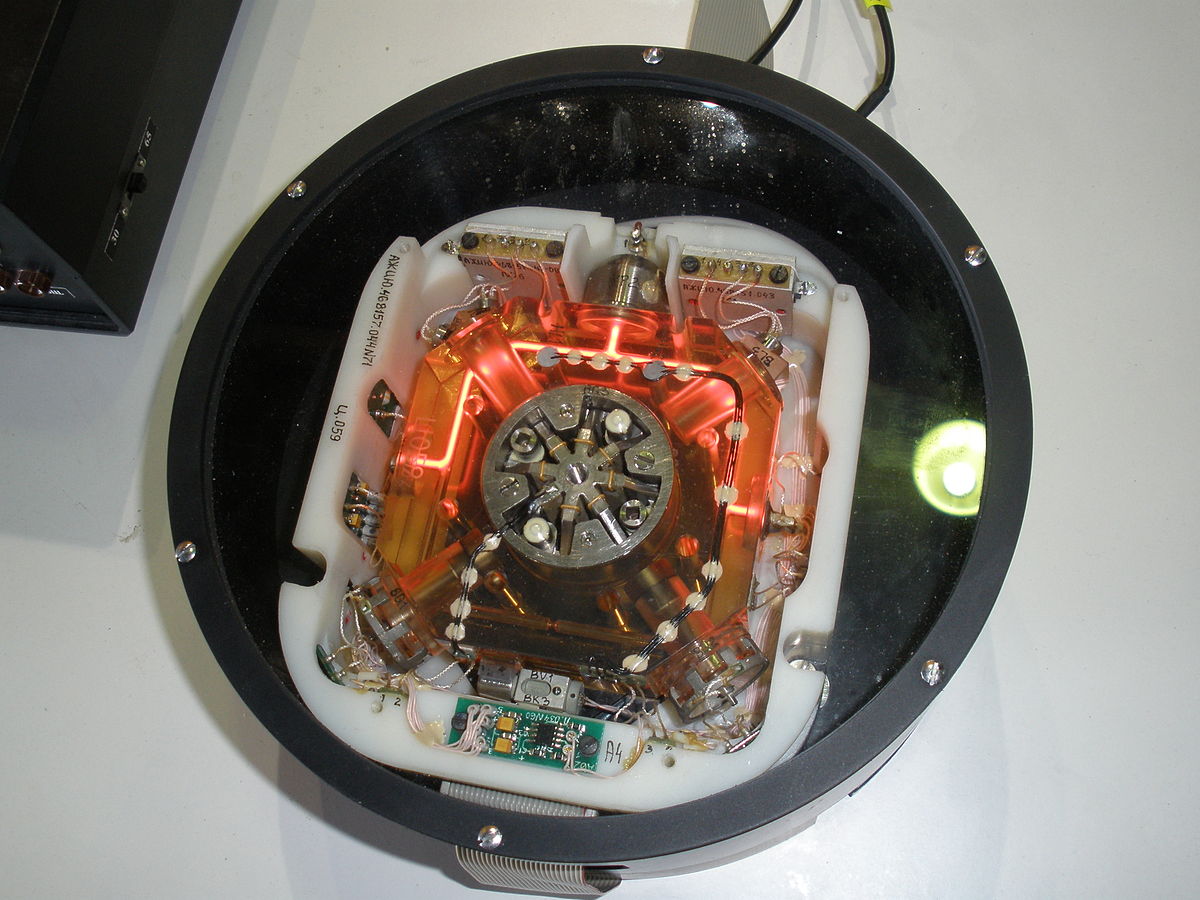
Optical Gyroscopes have no moving parts, (unlike mechanical gyroscopes) making them extremely reliable. Courtesy of Wikipedia.
Mostly used to stabilize and control motion, optical gyroscopes can be found in aircrafts, robots, smartphones and all such devices that need to constantly determine their current orientation in space.
human gyroscopes – vestibular systems
At first, this might not seem like it is so important. After all, we have a good sense of direction and can sense rotations. Why is it vital for pilots and aircrafts to have gyroscopes telling them their orientation?
Our brain primarily uses a combination of sight and internal pressure sensors (our vestibular systems) to gauge the orientation. Standing upright without swaying from side to side is hard when we close our eyes. But it is not impossible. Our eyes only assist. Our brain can independently detect gravity with the help of our vestibular systems. Consisting mainly of
sensory hair cells in our inner ear that are activated by the moving of local fluids when our entire head or body moves, it is this vital system which fails in individuals suffering from the Meniere’s disease, causing vertigo and dizziness.
necessity of external gyroscopes?
When a pilot is in a plane, both the brain and eyes can provide a ‘false’ orientation of which way is down. As a plane banks while turning, our eyes fail to detect the turn since the entire cabin is also inclined. Similarly, the centripetal force causing the turn increases the downward pressure on our legs. This combined force is not in the direction of gravity, as can be seen in the figure, but in fact parallel to the plane cabin’s orientation. So the brain has no way of knowing its real orientation. All those who have looked out of a plane while it is turning know that while they can see they are leaning, sometimes more than 60 degrees, they do not feel an instability.
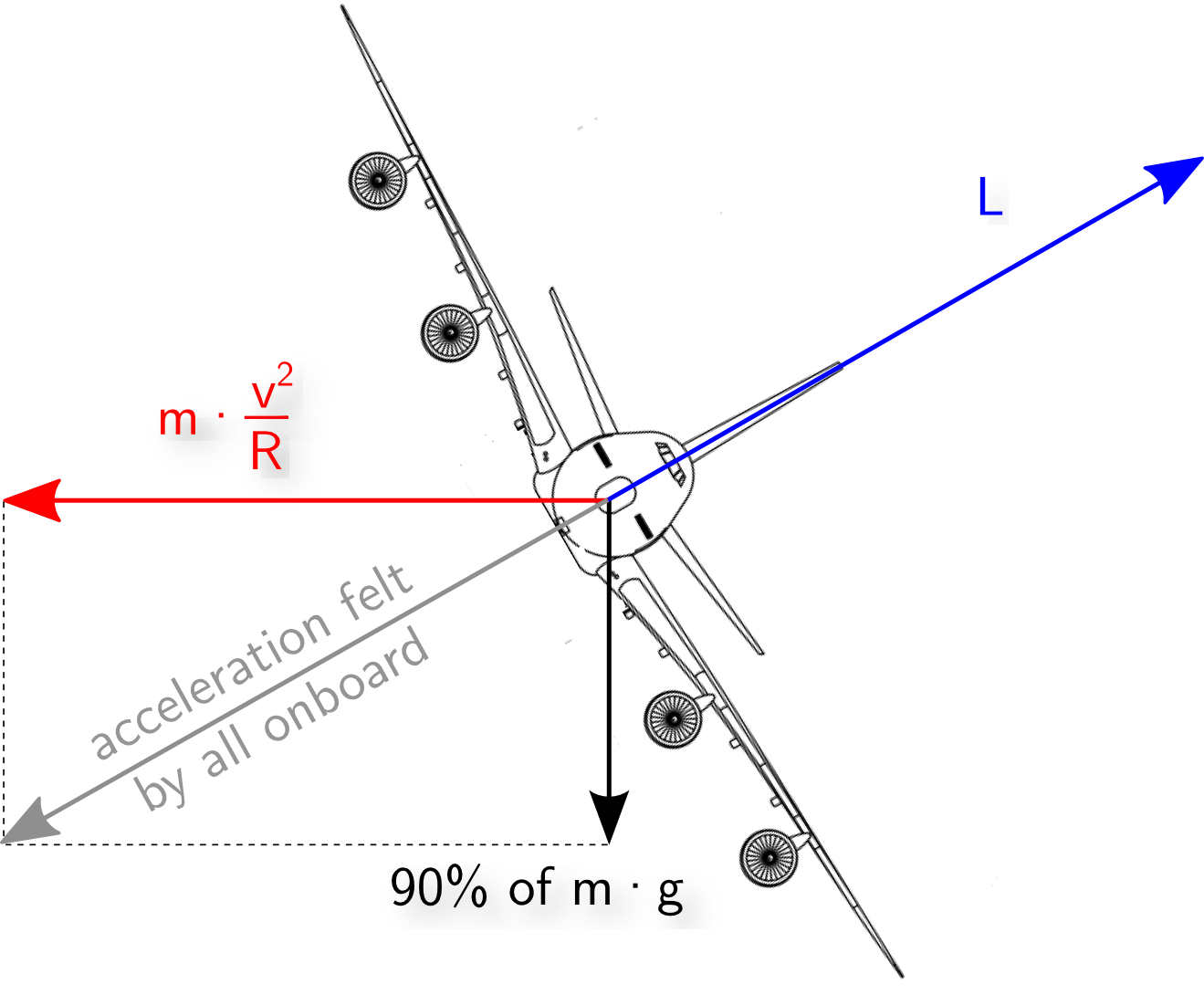
When the plane banks, the force felt by passengers is always downward in reference to the plane floor, and not in the direction of gravity. Courtesy of Aviation Stack Exchange.
Fighter planes are exposed to much rougher banks during rolls and dives. No pilot’s vestibular system can help him maintain his orientation with respect to gravity, as his inner ear fluids will be moving in all directions. Thus having a reliable external gyroscope to keep track of the orientation of the aircraft at all times is essential.
Detecting Rotations
Each type of gyro has its share of advantages and drawbacks, and different requirements necessitate different forms of gyros.
Optical Gyroscopes
Optical gyroscopes use the constancy of the speed of light as their governing principle to detect rotational changes. There are two different variations of optical gyroscopes, both of whose designs and comparisons we discuss in the next article.
Advantages over mechanical gyros
Optical gyroscopes have largely replaced their mechanical counterparts. Firstly, optical gyroscopes are far more accurate. They can measure rotational changes with an uncertainty of 0.001 degree/hour. As a reference the most accurate mechanical gyroscope provide only 0.1 degree/hour precision.
Secondly, their internal
laser and sensor technology are more reliable. Additionally, they have no moving parts and therefore require no maintenance. This results in a mean time of failures in excess of 60,000 hours.
Optical gyroscopes also directly generate soft data, unlike the mechanical gyros. This is essential in our modern age. From autopilot functioning in aircrafts to guided missiles and autonomous rovers in Mars, modern systems only use sensors if they reliably generate computer-friendly data.
Governing Principle of Optical GyrosCopes
As mentioned above, there are two kinds of optical gyroscopes: the Ring Laser gyro and the Fiber Optics Gyro. Both rely on the same principle – the Sagnac effect – which is an outcome of the constancy of the speed of light.
The Sagnac effect is a shift of interference fringe position in a ring interferometer depending on the angular velocity of the set-up.
In 1913, Georges Sagnac conducted his experiment to prove the existence of the illusive aether. The existence of aether was a widely believed theoretical idea due to light’s constant speed, regardless of the source’s velocity. We now know that this is wrong, and that the constancy of the speed of light is actually due to the relativistic nature of our universe, as Einstein discovered.
Interferometers
Like most scientists working at relativistic scales in the physics of light, Sagnac used an interferometer – a laser device that splits its beam in 2 with the help of a half-silvered mirror.
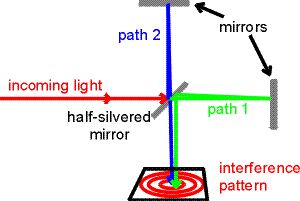
An interferometer’s basic setup comparing the light beams’ paths based on the interference pattern. Courtesy of web.pa.msu.edu
The light beams travel in different directions, with one of both often encountering different optical obstacles. The light beams merge back, and detector captures the resultant beam. Depending on the differences in their individual paths, the beams are out of phase, producing an interference pattern. A detector analyses the interference pattern to determine various properties of the experiment and the obstacles the light beam encountered. Scientific researchers and industry use interferometers extensively to measure small displacements, refractive indexes and surface irregularities. If you are more interested in the functioning of an interferometer, definitely do check out
our previous article here.
The Sagnac Effect
The diagram of a ring setup interferometer is provided below. Once the silvered mirror splits the light beams, they both travel an equal distance in opposite directions around a loop. When the beams join back, a regular interference occurs since the light beams are in phase.
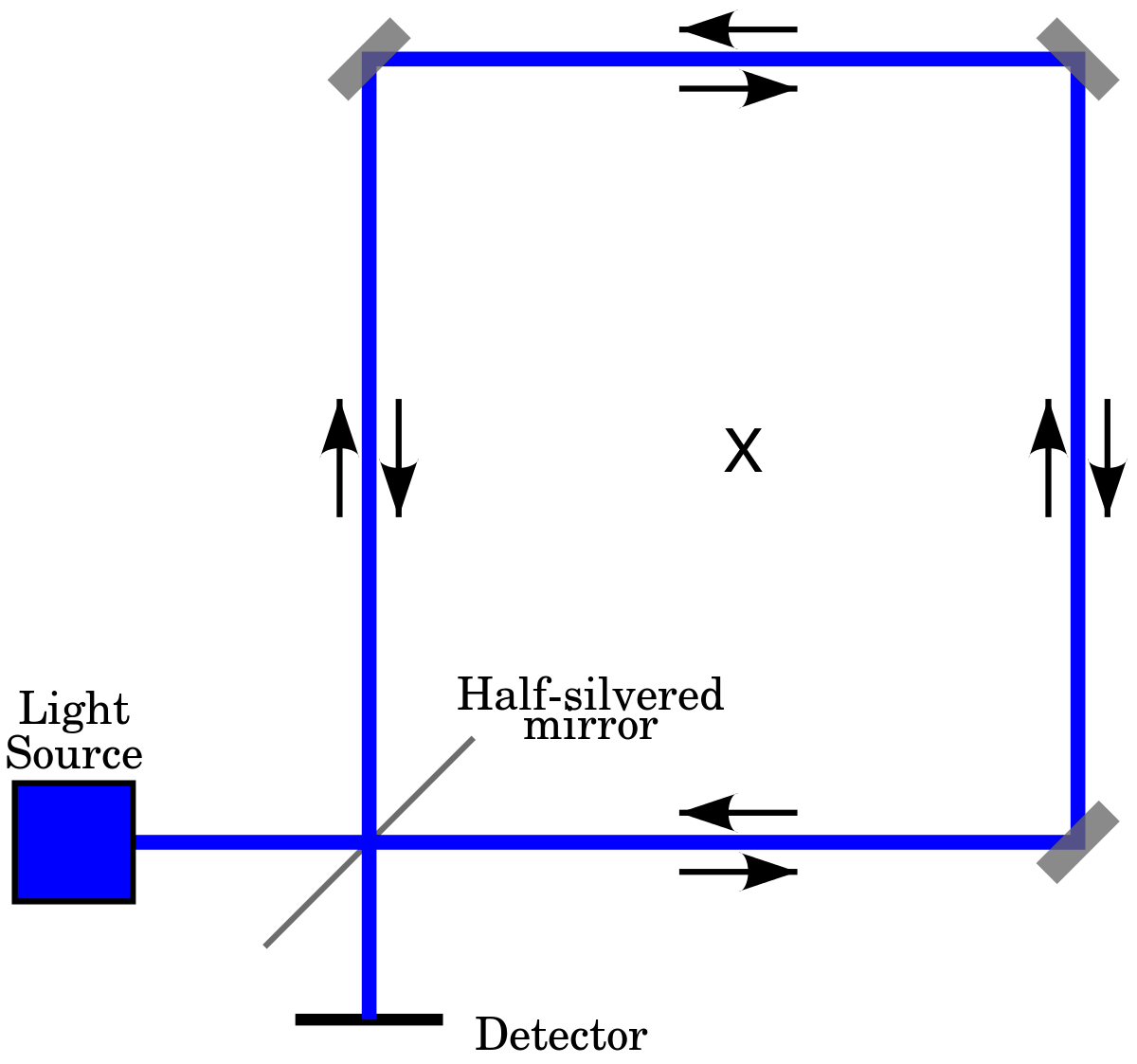
An interferometer in a ring setup. Light rays travel from source to detector in clockwise / counterclockwise paths of equal distance. Courtesy of Wikipedia.
However, once the loop rotates around its central axis (marked X in the diagram, coming out of the page), the light beams no longer travel equal paths and the phase difference produces a shifting interference pattern.
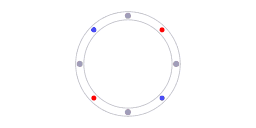
The different color balls represent light rays traveling in different directions. Notice how the same balls meet at a different location in the loop due to one having to travel a shorter distance as the detector has shifted due to the loop’s rotation. Courtesy of Wikipedia.
Sagnac effect is this change of travel times of 2 light beams around a loop due to the rotation of the system itself.
The phase difference of the light beams depend on the fringe shift of the interference pattern. And a pretty straightforward
formula (provided by Sagnac himself) relating the phase difference to the rotation rate yields an extremely accurate and reliable gyroscope. Here is a
video of a live experiment of the Sagnac effect.
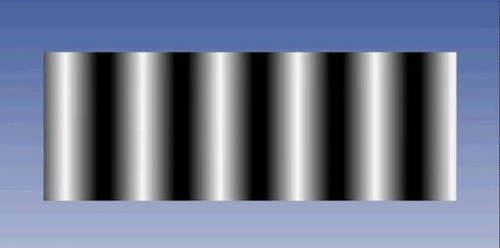
Phase shift observed in optical gyroscopes when the system begins to rotate. Courtesy of Gfycat.
Next time we will look at the design aspect of the two optical gyroscopes.







